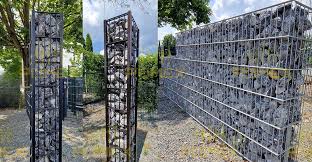Retaining walls are vital structures built to stop erosion of soil, control water runoff, and create level terraces on sloped landscapes. If you are considering the options for retaining walls, gabions (gabiony) and traditional wall retaining are two of the most popular options, each with its unique benefits and drawbacks.
Gabions: An Overview
Gabions are wire mesh cages filled with rocks, concrete, or other materials. They are typically employed for erosion control as well as stabilize slopes. Gabion walls are highly versatile and can adapt to various types of terrains. Their design allows for natural drainage, reducing the pressure of water behind the wall while minimizing risk of erosion. Gabions are especially useful in areas with a high flow of water or unstable soils.
One of the main advantages of gabions is their flexibility. They can be easily adapted to irregular shapes and sizes, which makes them suitable for difficult terrains. Additionally, gabions blend well with natural surroundings due to their rock-filled appearance. This contributes to a more natural aesthetic.
However, gabions have some drawbacks. They may require more maintenance over time, because the wire mesh is susceptible to corroding and the rocks might change or settle. The construction process involves placing each cage and then filling it with rocks, which is a labor-intensive.
Traditional Retaining Walls: An Overview
Traditional retaining walls are usually made of various materials, such as brick, concrete or even stone. They are famous for their durability and strength. Concrete walls for retaining, particularly provide a great degree of stability. They are also customized with various finishes to match aesthetic preferences. They are ideal for locations requiring a strong barrier that can hold back massive amounts of soil.
Traditional retaining walls have an appearance that is more uniform and can be engineered to withstand heavy weights. They are also less prone to problems with maintenance than gabions. But, they do require drainage systems that are properly designed to prevent water buildup in the walls, and this could result in structural issues.
Comparison
In short, gabions provide flexibility and natural integration with the landscape but may require more maintenance. Traditional retaining walls are stronger and endurance with lower maintenance, but they may not have the flexibility of gabions. The decision to choose between gabions or traditional retaining walls is contingent on the specific requirements for the particular project such as aesthetic preferences, budget and environmental conditions.

